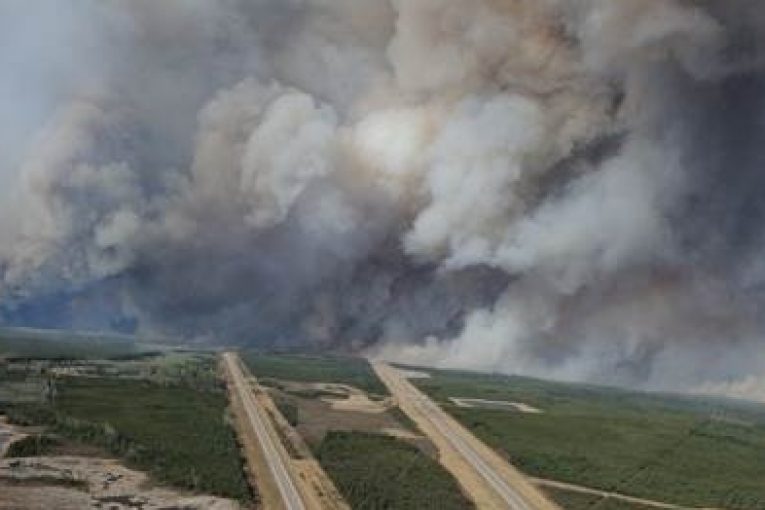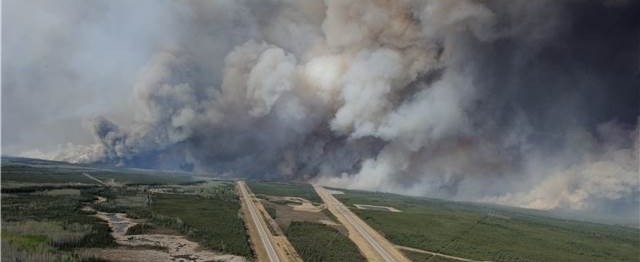
Evacuation orders for oil sands work camps lifted Monday

Athabasca Oil Corp resumed operations at its Hanginstone oil sands facility following a shutdown on May 5 after an out of control wildfire threatened the area. National Defence photo.
CALGARY, Alberta, May 24 (Reuters) – Some oil sands producers restarted operations on Tuesday as a mass evacuation of the Fort McMurray oil town entered its fourth week, though cool weather and light winds were helping firefighters dampen the blaze.
No oil facilities or communities were in the fire’s path as of Tuesday morning as its footprint grew slightly to 523,000 hectares (2,008 square miles) from roughly 522,900 hectares on Monday, Alberta officials said at a news conference.
The blaze was spreading mainly across forested areas to the east on Tuesday as firefighters were working to hold fire breaks around prized oil sands facilities where crews have stripped away tinder-dry trees and vegetation.
Firefighters from the United States and South Africa were expected to join the fight in the next few days, the officials said.
“We have some hot, dry conditions coming this week so we’ll really be put to the test here to see how that holds,” Alberta Wildfire Compliance and Investigations Manager Chad Morrison said. “We feel fairly confident in the coming days that we’ll hold most of the ground there.”
No rain has been forecast for Tuesday.
On Monday, authorities lifted evacuation orders for all work camps in the area, a significant step for companies eager to restart production. Workers could return to camps once safety assessments were completed over the next two days.
The fire has shut down about half of the oil sands‘ production capacity, though some producers are beginning to come back online.
Athabasca Oil Corp resumed operations at its Hangingstone site following a shutdown on May 5, before which production volumes exceeded 9,000 barrels per day, the company said in a statement on Tuesday. Athabasca said it expected to return to normal operating levels over the next several weeks with no anticipated long-term impacts.
Suncor Energy Inc said on Monday it was preparing for a staged restart of its operations, with some workers in the area doing necessary “pre-work.”
“Given our current assessment, we are confident we can safely return people to the region to begin the process of restarting operations,” Suncor President and Chief Executive Steve Williams said in a statement. “We believe that getting our employees back to work is an important part of the process to get things back to normal in Fort McMurray.”
Some of the area’s more than 90,000 evacuated residents may be allowed to return starting on June 1, depending on air quality and other factors.
The regional government published a pamphlet late on Monday that recommended returnees bring at least two weeks’ worth of food, water and prescription medication.
Alberta officials said they were developing logistics plans to guide the thousands of residents expected to return, many of them to uninhabitable homes damaged by fire and smoke.
Challenges include limited medical services and labyrinthine insurance claims, as well as dealing with black bears that have been lured into the desolate neighborhoods by the scent of rotting food.
The fire destroyed entire neighborhoods when it tore through Fort McMurray on May 3 and 4, but most of the city remained standing. Even so, insurers say the fire could be the most expensive natural disaster in Canadian history, costing up to C$9 billion.
“You are returning to a community that was profoundly affected by a wildfire,” the government pamphlet said. “Services that you are used to or rely on may be limited for some time.”
($1 = 1.3151 Canadian dollars)
(Additional reporting by Allison Martell; Editing by Jonathan Oatis and Richard Chang)
You can read more of the news on source
